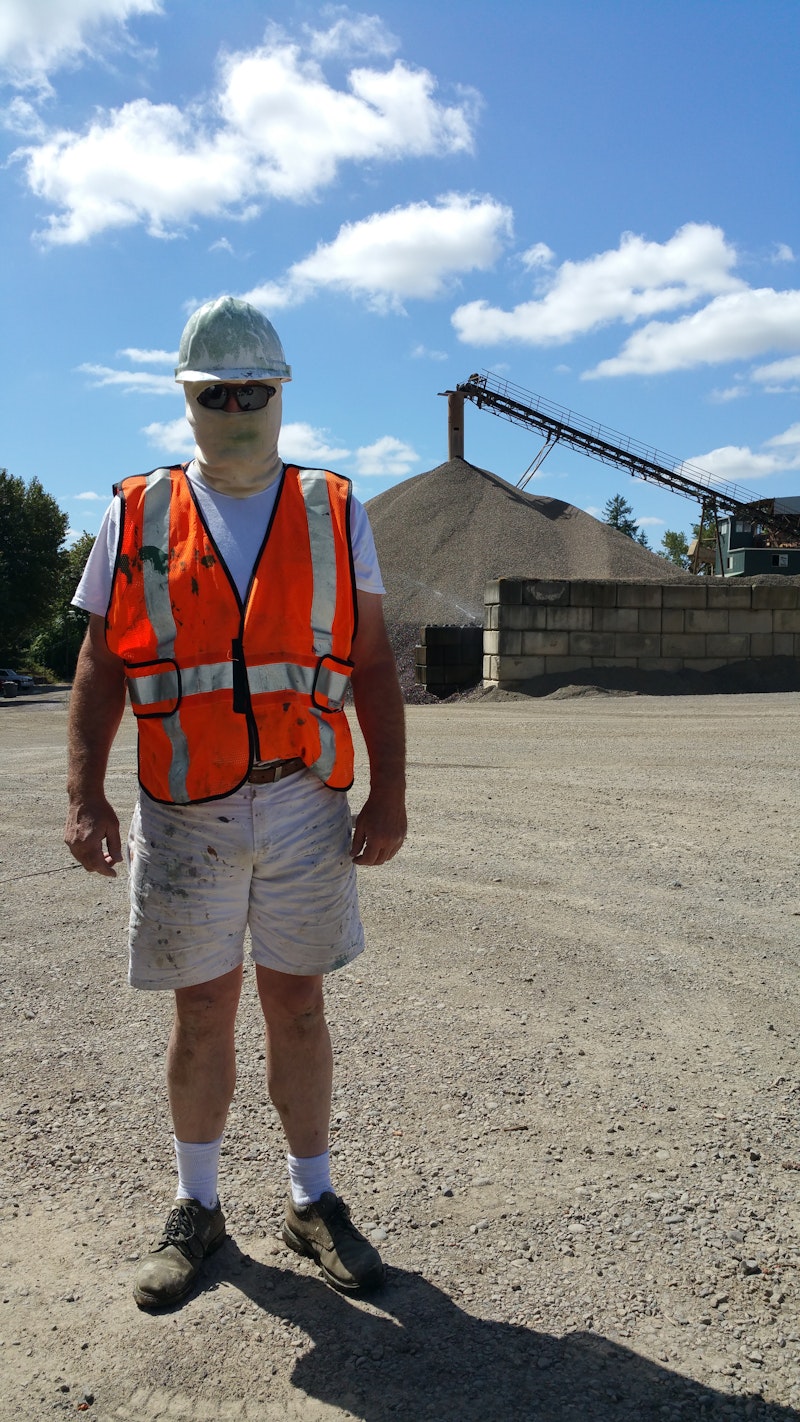The job was going well, until we committed that sin in the painting contractor trade—spilling paint.
It was a cherry contract. I was contacted by the operations manager of a regional concrete supplier in a suburb of Portland. The company was taking bids on the exterior of an equipment shed, referred to as “the barn.” At the appointed time I drove past the corporate offices on the main road, and followed a long gravel road. At its end were three towering conveyor belts, which, I’d learn, never stopped during business hours. Beneath the drop-zone of the belts were three gray pyramids—two gravel and one powdered—four and five stories high.
The barn was a cavernous building, wood-sided from the 1950s, with a massive sliding gate that took two men to open. Inside was every tool and vehicle imaginable for concrete production, from shovels to industrial hoses to bulldozers. The exterior was coated in concrete dust, the paint was peeling badly on two sides, and glancing up I could see that scores of wasps nests were in the rafters. A company pickup pulled up, and I met with a foreman. My bid was accepted.
The site was dedicated hard-hat and orange-vest territory per Oregon state regulations; I found them cheap at Home Depot. The building was tested for and showed lead, so it had to be scraped and primed in Haz-Mat suits before being washed, so as not to toxify the ground.
My four-man crew got started. The foreman was nice enough to provide some wasp killer, which we spurted aloft before scraping. After the scrape and oil-primer, the pressure wash was a blessing. The dirt, grime, and dead nests flowed down while washer spray misted in the hot sun.
The site was loud. Every 20 minutes huge dump trucks would roll in to get bulk concrete for big foundation jobs. Mini-conveyors would load them to the brim. Clouds of concrete dust were picked up on the afternoon winds, and blew over the barn while we were painting. The foreman told me not to worry about it.
A stream of surprisingly clean water trickled down from the pyramids to the barn, and then ran over a steep, wooded embankment. We assumed it was some kind of rinse water needed in the process. On the last day of the job, a slop bucket full of acrylic-laced water used to clean the sprayer was tipped over by the sprayer line into the stream.
I didn’t think much of it, the site was so remote, until a company pickup pulled up and braked hard in a cloud of dust. It wasn’t the foreman, but a well-dressed executive from the front office. “You’ve got paint headed for the creek down there,” he said. I didn’t know about any creek. It turned out that there’d been a company spill at the sacking plant, and a team from Oregon’s Department of Environmental Quality had been alerted by downstream homeowners. I looked in horror as the exec pointed to large globules of “Florentine Beige” being pushed over the embankment by slush from the plant.
“They’re looking at the creek,” he said. “You better do something about this or you’ll be part of a big problem.”
He drove off in a hurry, and, long story long, we spent three hours on our hands and knees picking gelatinized paint out of the water. Thankfully, much of it had glommed onto weeds and eddies in the flow. Payment was forthcoming. We’ll never know how much went over the embankment.

